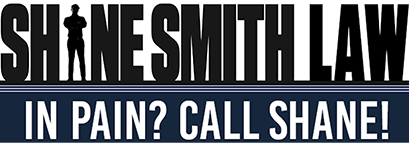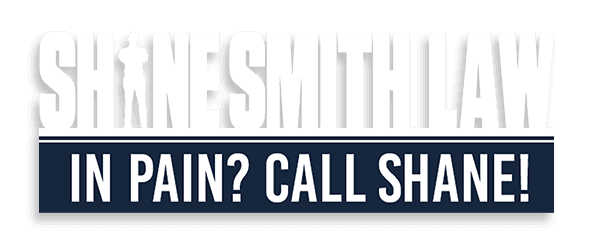
Our team at Shane Smith Law will review your case, free of charge, and explain your legal options.
Atlanta Slip and Fall Attorneys
Imagine you are shopping in a store or visiting another type of business and all of a sudden you slip and fall. Many of these accidents occur because the property or business owner did not properly maintain the premises or keep the property free from dangerous conditions.
If a property owner fails to keep the premises reasonably safe for visitors, they should be held liable for any injuries that result. If you have suffered injury in a slip and fall accident, call an experienced lawyer as soon as possible to learn more about your legal options.
Call (980) 246-2656 or contact us online to learn more about your options after a slip and fall accident.
What to Do After a Fall
Here are some things a person involved in a slip and fall accident should do immediately following the incident:
- Report the Injury: The incident should be immediately reported to the property owner or manager. Injured parties should keep lists of all people who were consulted at the accident scene including property officials (employees, managers or owners), witnesses and medical or emergency personnel (including law enforcement officers).
- Seek Medical Attention: Injured parties should have a medical consultation and any necessary medical treatment. A physician should be given a complete record of any pain, discomfort, or injury related to the accident and the relevant time period when such discomfort occurred.
- Document the Scene: An injured party should also document the area around the accident in as much detail as possible. This includes video or photographs of the accident scene or comprehensive descriptions of the area.
- Gather Witness Information: Witness names and contact information should be obtained.
- Retain Legal Representation: A company may pressure you to admit fault or offer you an unreasonably low settlement offer hoping that you will give up your right to sue. Retaining an attorney will help ensure that you receive fair and just compensation for your injuries.
Common Places for Falls
Falls can happen anywhere, but some areas of the home or outdoors present a higher risk than others. The National Safety Council provides the following list as some of the most common locations for falls:
- Stairs
- Doors
- Ramps
- Places with clutter
- High traffic areas
- Uneven flooring
- Places where there is a high risk of spills or wetness
- Heights without gates or railings
- Work surfaces that are not properly secured
- Ladders
Common Causes of Slip and Falls
Slip-and-fall accidents can be caused by a multitude of hazardous conditions. Some common situations include:
- Wet floors
- Uneven sidewalks
- Damaged stairs
- Unmarked steps
- Neglected snow and ice (where a property owner did not make an effort to remove it or warn of its presence)
- Damaged or missing railings, especially on stairs
- Lack of warning signs around hazardous areas (such as spills)
- Potholes
- Neglected debris on the floor or property
Types of Falls
Slip and fall accidents can occur in a workplace, apartment building, home, retail store, supermarket, and even on a public street. While anyone can become a victim of a slip and fall, victims may suffer from different types of falls that can occur, including:
- Elevated fall – This type of fall may result in a serious or fatal injury, as a person falls from a height of 10 feet or less.
- Same-level fall – This is the most common type of fall to cause people injuries. It occurs when a person is walking and simply slips or trips on a hazardous condition and falls to the ground.
- Slippery surface fall – This common type of same-level slip and fall can be due to wet floors or spilled liquid that creates a slippery and hazardous condition.
- Trip and fall – This type of fall occurs when a person’s foot hits an object or obstacle, causing him or her to fall down.
What Compensation Can Be Pursued After a Slip and Fall Accident?
Slip-and-fall accidents can include recovery for the following:
- Medical expenses
- Potential future medical expenses, therapy or rehabilitation
- Loss of earnings or future earning capacity
- Pain and suffering
- Other losses including the inability to cook, clean, drive, or take care of yourself and your family
Do not wait to get advice if you were harmed in a slip and fall accident and are considering taking legal action. Call (980) 246-2656 or contact us online to get started.
Common Slip and Fall Injuries
Slip and fall accidents are a common cause of injury in the United States. They can lead to a wide range of injuries, ranging from minor annoyances to serious conditions that require long term medical attention. Some of these injuries can include:
- Traumatic brain injuries
- Broken bones
- Compound fractures
- Concussions
- Hip fractures
- Ankle and leg fractures
- Elbow injuries
- Lacerations
- Sprains
- Soft tissue injuries
- Dislocations
- Bruises
- Knee injuries including ACL and MCL
- Death
Are All Slip and Falls the Fault of a Property Owner?
Just because someone falls on another person’s property and gets injured, it doesn’t automatically make that property owner liable. Yes, property owners do have a duty of care to keep their property safe and free from hazards so that people on their premises remain safe. However, everyone who walks onto that property owner’s premises has a responsibility to walk safely, wear the appropriate shoes, and watch where they are going.
In order to find the property owner responsible for your fall and injuries, you must establish that a hazardous condition, a defective condition, or design flaw caused your fall. You also have to prove that the property possessor had knowledge of the hazard, or enough time had lapsed to where it should have been discovered, and the hazardous condition was not corrected. Establishing proof can be hard to do on your own, it typically requires an investigation by an experienced lawyer.
Establishing Liability After a Slip and Fall
In order to establish legal liability, it is important to determine exactly what caused you to slip and fall. Property owners are not required to remove all potential hazards that may cause someone to fall; they are only required to use the same amount of care that a “reasonable person” would use. Of course, this is a very fact-specific inquiry and whether you have a claim will depend largely on the specific circumstances of your case.
Some relevant factors that may determine whether you have a claim include:
- Whether the owner of the property or their agent caused the dangerous condition that injured you
- The owner of the property or their agent must have known about the dangerous condition and failed to rectify it
- The owner or agent should have known about the dangerous condition because a reasonable person would have discovered it and taken steps to fix it
The types of conditions that may cause a slip and fall are as varied as one could imagine; they could range from the ubiquitous banana peel on the floor to a poorly placed drainage grate on a walkway. Failure to put out sufficient warnings to alert people to the presence of wet floors, stairs, changes in floor height, or low ceilings could also create legal liability.

Slip & Fall Accidents FAQ:
-
What is strict liability?
-
What is a hazardous condition?
-
What is Superior Knowledge?


-
Millions of Dollars Obtained
Our team is committed to obtaining the best possible result on your behalf. Whether your injury is small or big, we will not rest until we get the compensation you deserve.
Explore Our Results -
Committed to Providing Answers
We understand that this is a scary and confusing time. We have created a library of free resources that will allow you to start finding the answers and solutions to your most pressing questions.
Explore Our Library -
Focused on Your Recovery
We handle all aspects of Personal Injury throughout North Carolina and Georgia. If you have been injured, our team can help.
Explore How We Can Help



